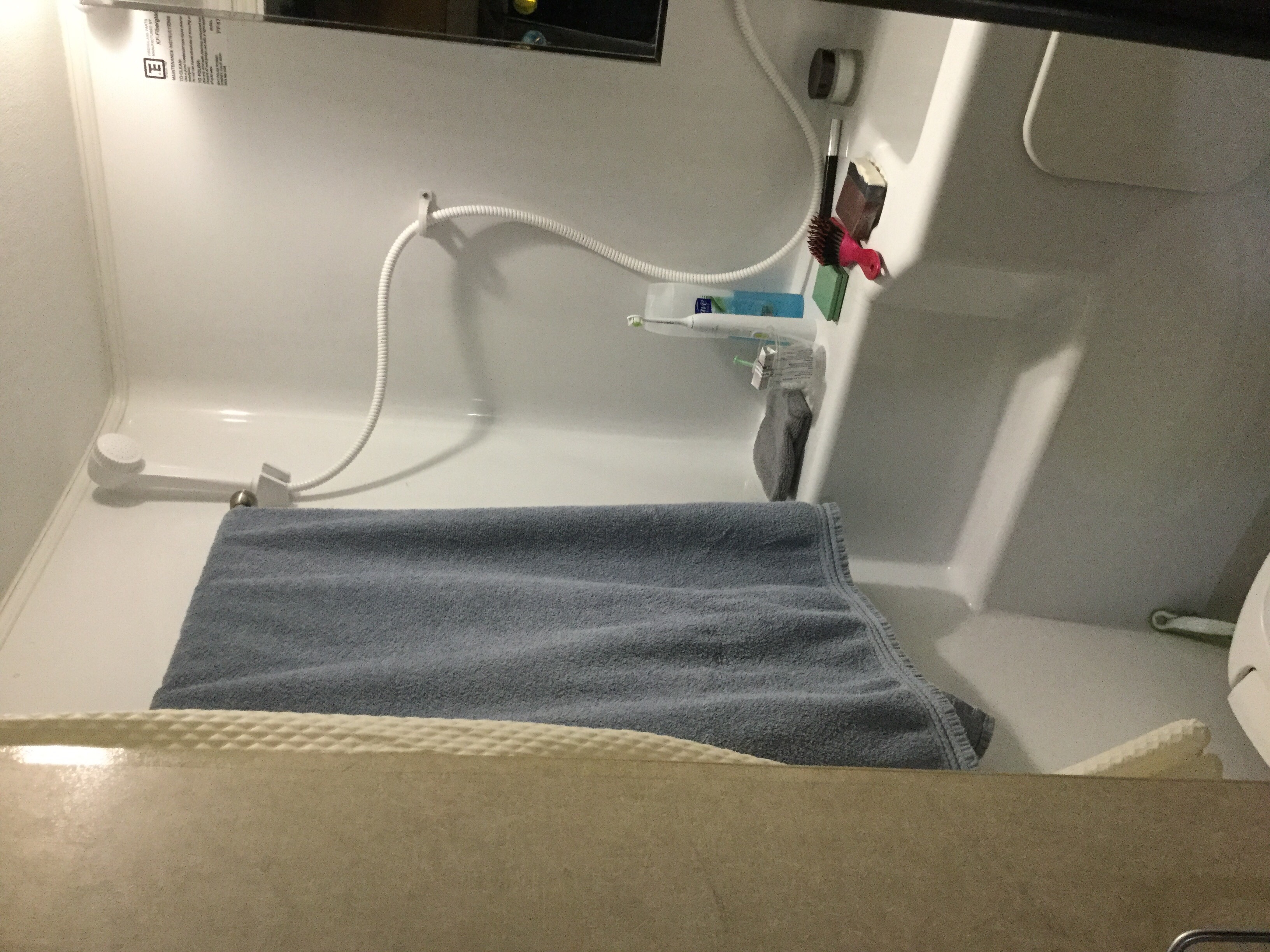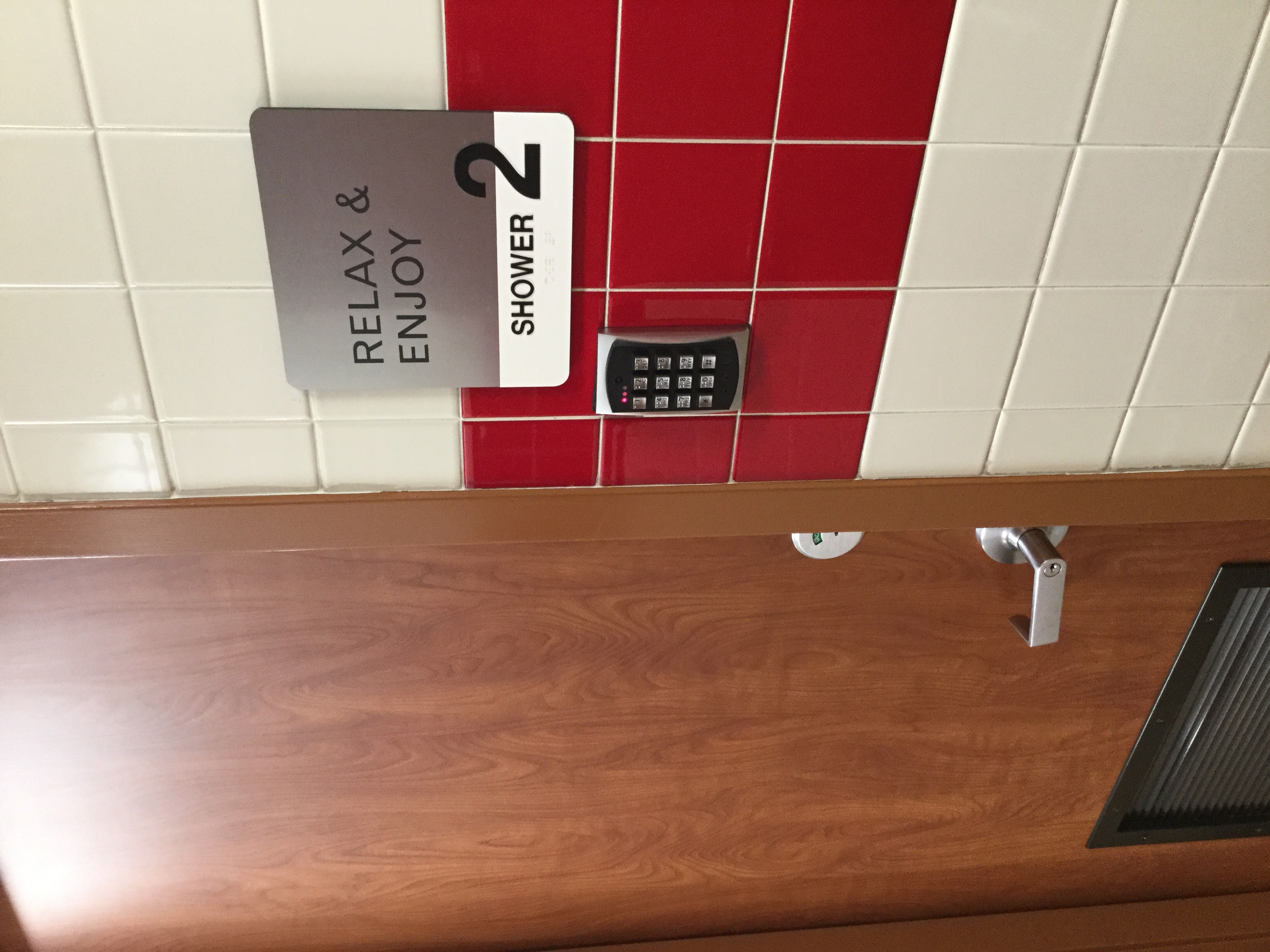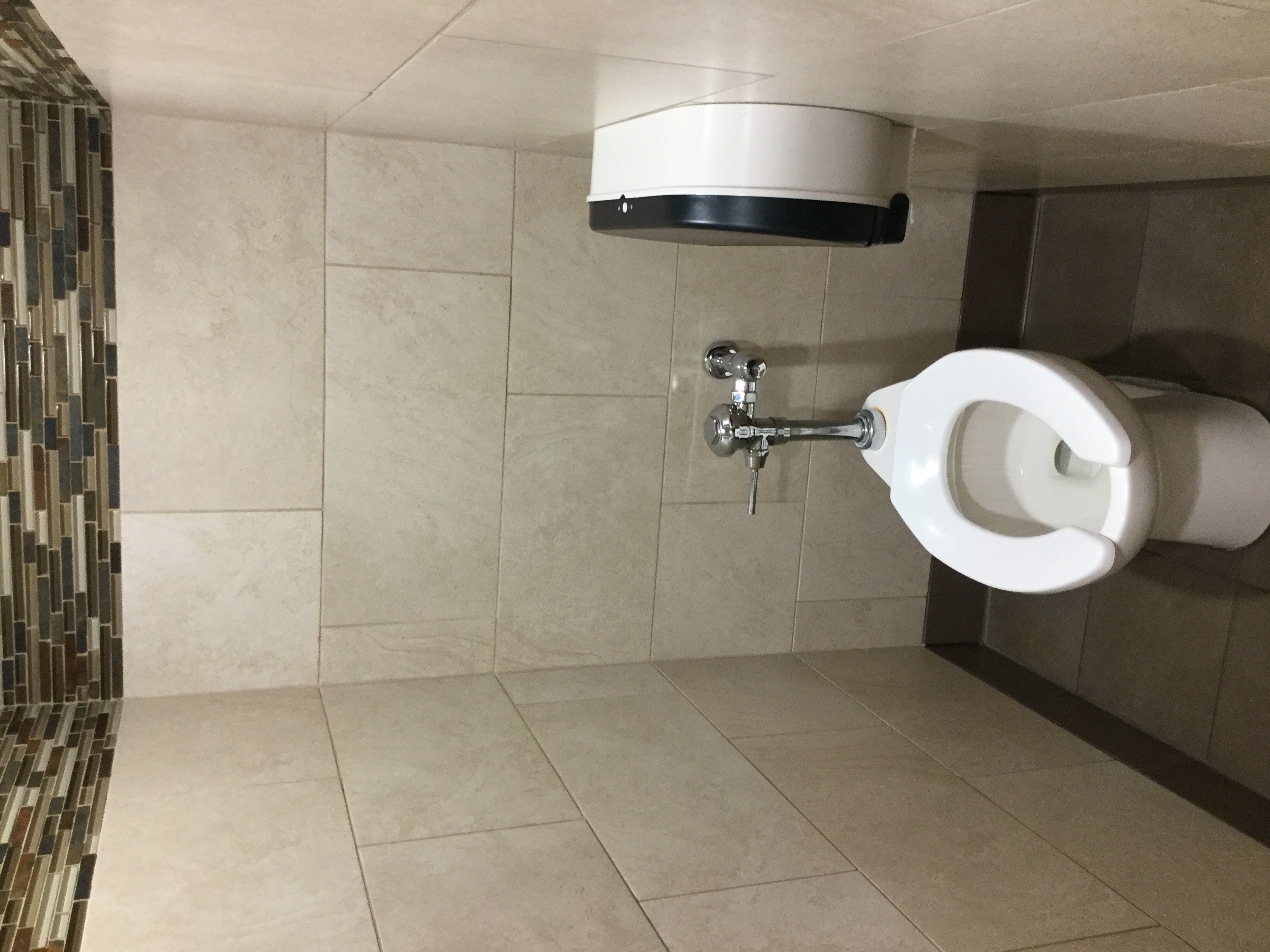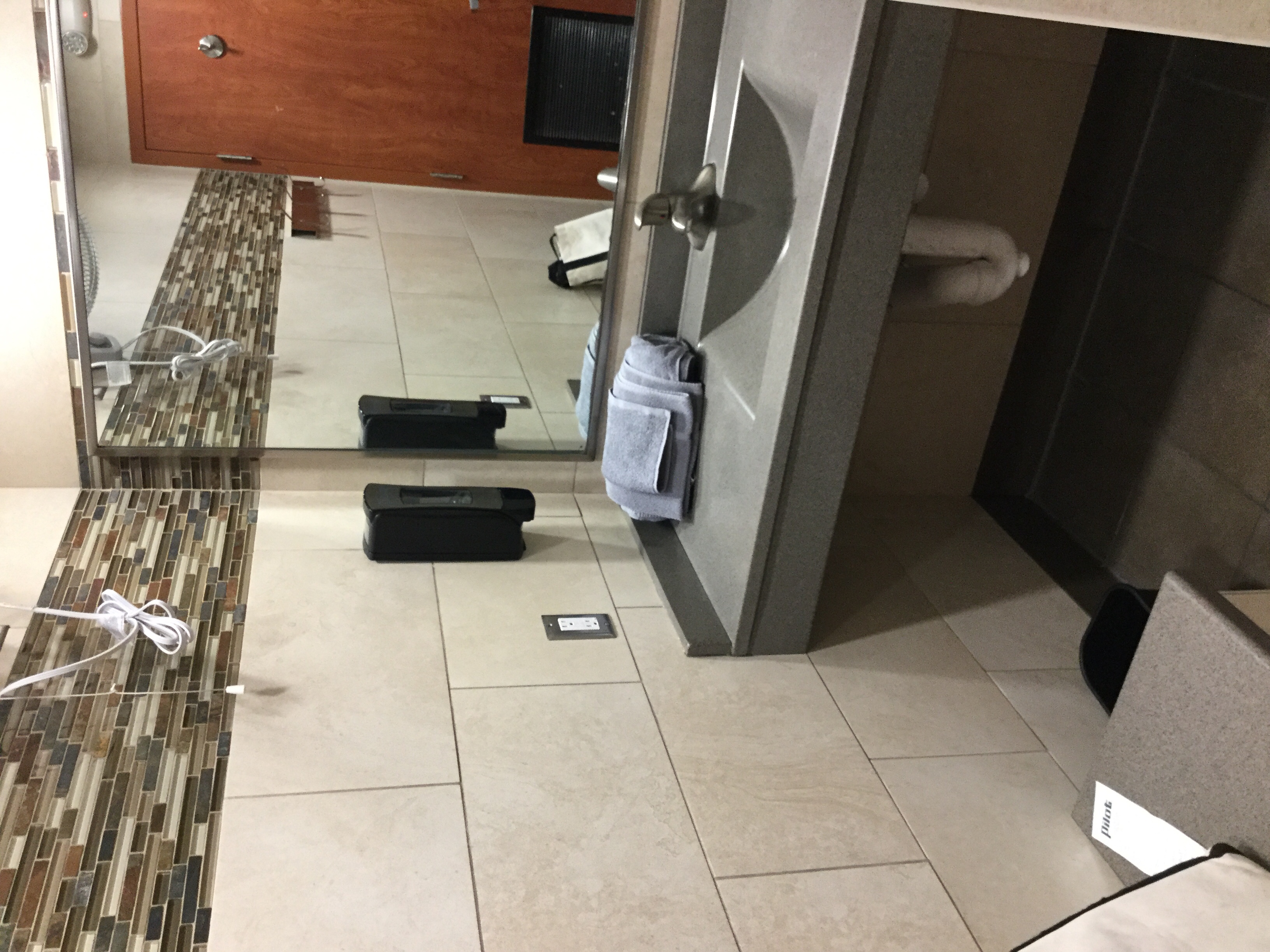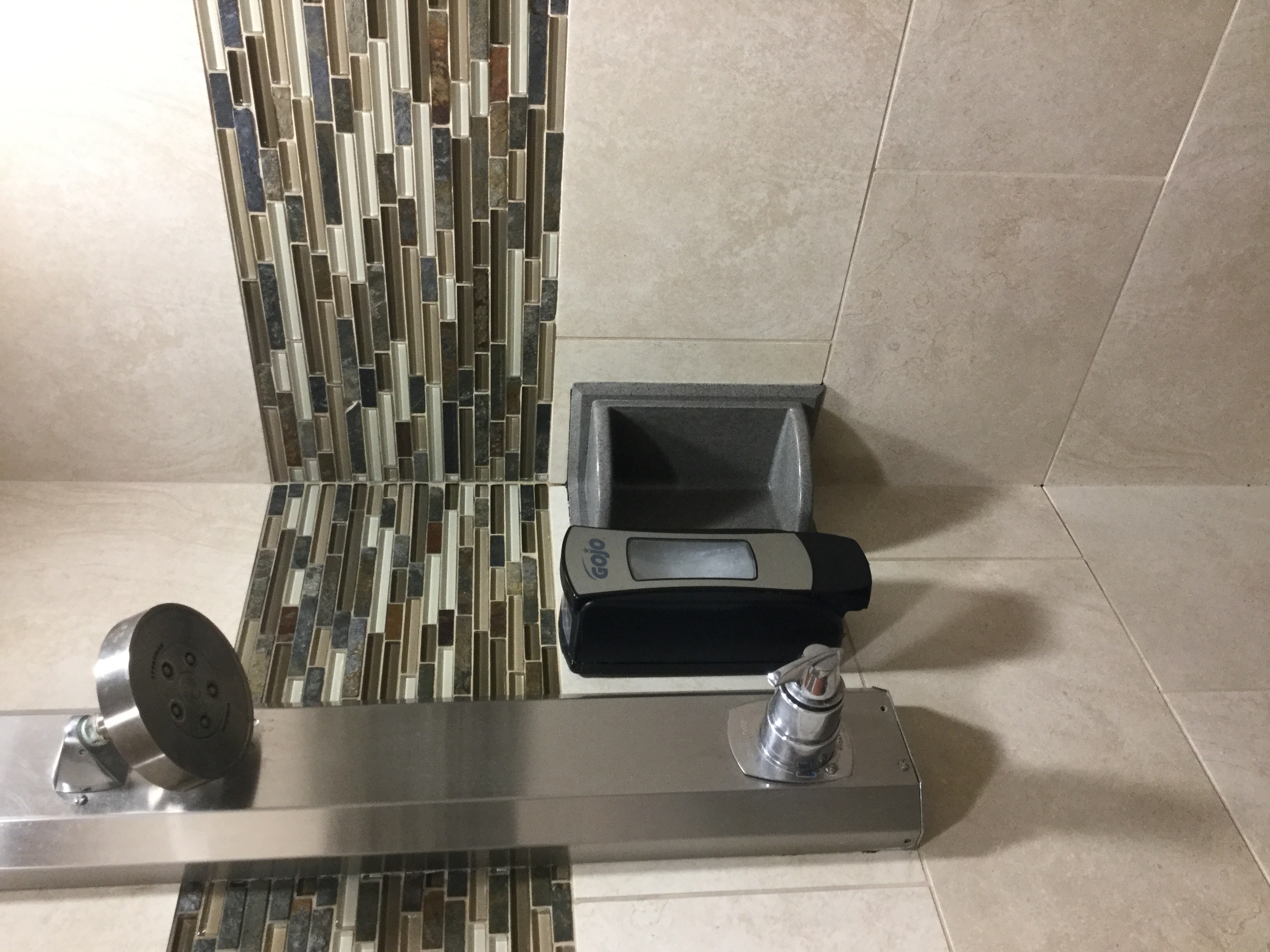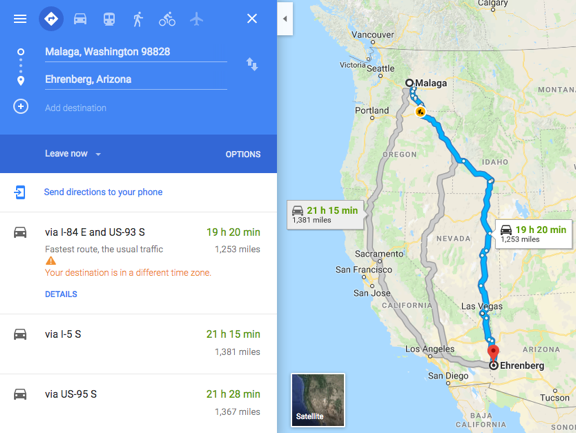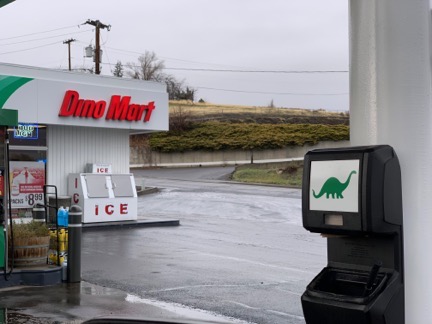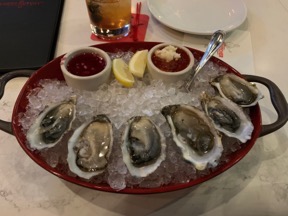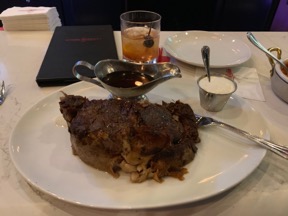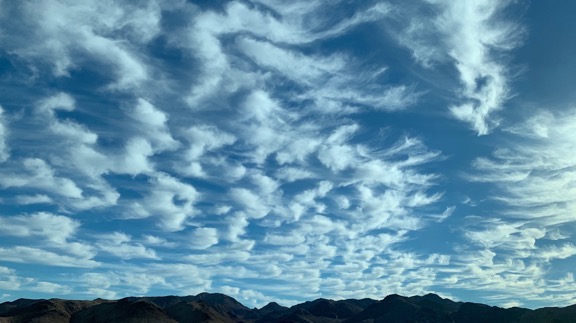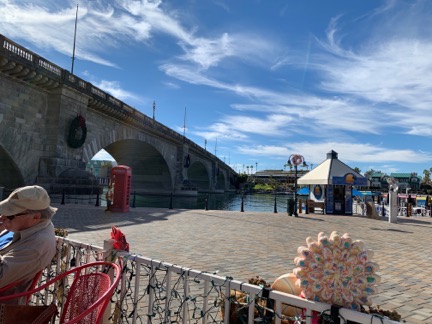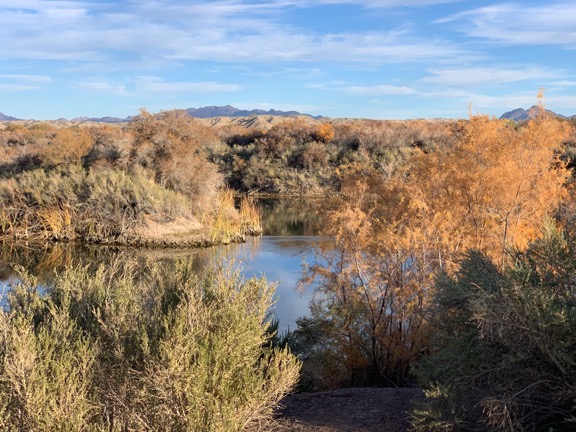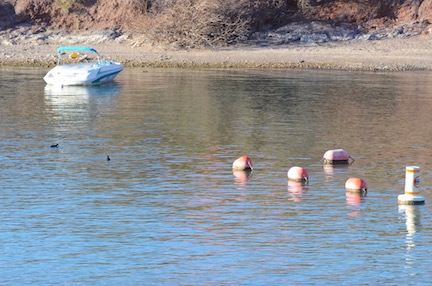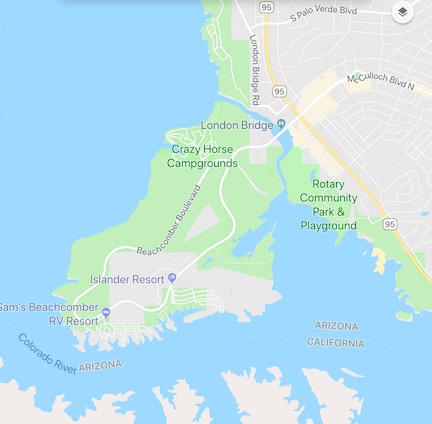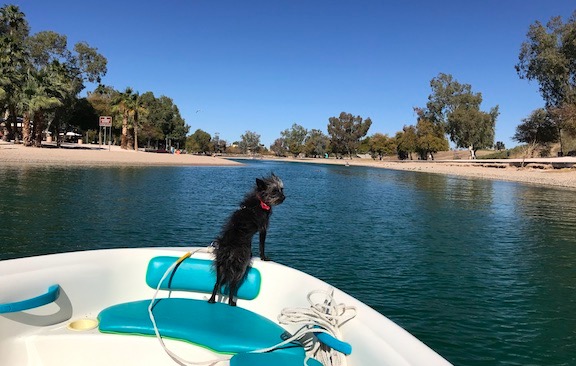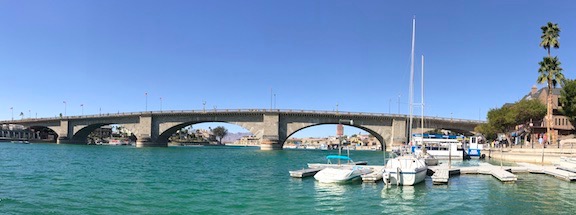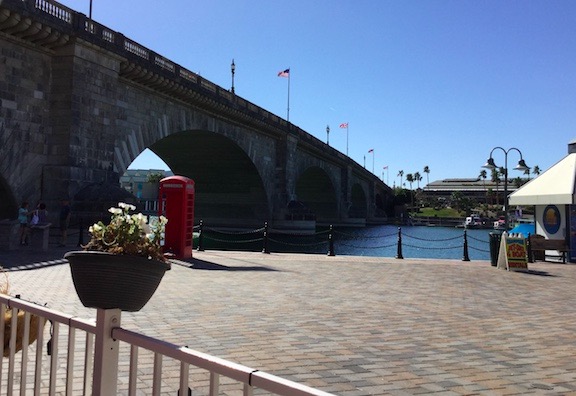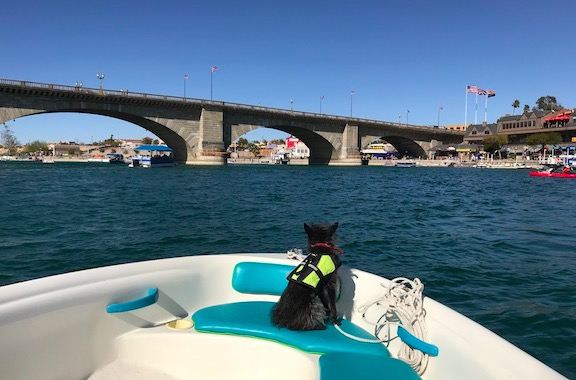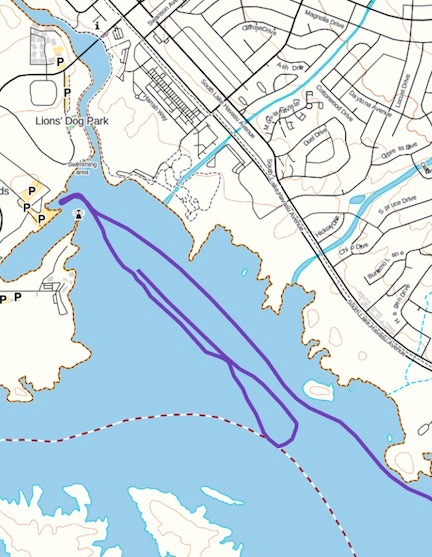I do some shopping and configure my new old trailer.
• The Long Drive
• At the Backwaters Campsite
• In Mesa and Gilbert
• A Quick Stop in Wickenburg and Forepaugh
• Off Plomosa Road
• Camping at the Big RV Show
• A Trip to Organ Pipe with the WINs
• The Tucson Gem & Mineral Shows
• Wickenburg Gold Rush Days
• Constellation Park Interlude
• White Tank Mountain Park
• Bumming It in Phoenix and Apache Junction
• A Dose of Civilization
• Return to the Backwaters
•
Although I would have had breakfast at Wild Horse West, they didn’t open until 10 AM and even then all they had was their regular burger menu. So after taking Penny for a quick walk to do her business, we loaded up into the truck and pulled out, dragging the trailer behind me.
Return to Wickenburg
If you’ve been reading this blog for a long time, you may recall that I lived in Wickenburg. For 15 years. I actually started looking for a different place to live back in 2005 — only eight years after arriving — but my wasband would only agree to two other places: San Diego, which is crowded and wildly expensive, and Santa Fe, which is at an elevation that would make it impossible to run my helicopter charter business. So I was stuck in Wickenburg — until I got divorced and was able to move wherever the hell I wanted to. I wasted no time getting out. That was in 2013.
So I knew Wickenburg well. I knew where I could get printing done (KwikPrint) and where I could buy groceries (Safeway). And I was only in town long enough to hit those two destinations, get what I needed, and get out.
At Forepaugh
My friend Janet, who I’d camped with for two weeks over the Christmas holidays, was staying with her significant other, Steve, at an off-the-grid ranch in Forepaugh.
Forepaugh is roughly halfway between Aguila and Wickenburg. There’s no town, but a bunch of people live near the main road on small ranchettes. Its claim to fame goes back to World War II, when glider pilots were trained at its old airport, which has since been wiped off the map, most likely by the guys who like to fly their toy airplanes there.
The ranch Janet and Steve were staying at belonged to their friend Rosie. I’d stayed there before. This time, I was staying for a day or two to configure my cargo trailer so it could neatly and efficiently hold all the extra gear I had crammed into the back seat area of my truck and my camper.
You see, Janet and Steve use this stuff called E-Track to create flexible anchor points inside their cargo-hauling vehicles. They had to configure Janet’s new old truck so they were down in Phoenix, in part, to buy some E-Track. While they were there, they picked up two 10-foot lengths with connections for me. I needed to pick that stuff up, but I also needed to borrow their tools to install it. So I had a small ton of work ahead of me at the ranch before I moved on.
Rosie’s ranch is a working cattle ranch with free range cattle and other cattle that’s kept in pens not far from where Janet, Steve, and I camped. There are also lots of horses and dogs. There’s no electricity and Rosie doesn’t have any solar panels, so she fires up a big generator when it gets dark and lets it run all night. Fortunately, we weren’t close enough for it to be a bother. The rest of us had low power needs and solar panels so we didn’t have to run our generators much at all.

Rosie’s Ranch from the air, as shot from my drone one day.
I didn’t get anything done that first day I was there — Wednesday — but I did do most of the necessary configuration the next day. The E-Track, which I’d never used before, seemed like a good solution when you want to fasten something to the walls of a trailer or truck back. The trick was installing it so that the screws would catch something other than the plywood inside the trailer.
Of course, they didn’t come with hardware so I wound up going back into Wickenburg with Janet to fetch some self-tapping screws while she mailed a package. Then back to work. I managed to catch a few screws on the trailer’s metal frame. The others went into the plywood. But when I was done with the first rail it was not going anywhere without the trailer.
Steve cut the other piece for me since the trailer, which is 12 feet long, has a door on one side. I think we went with 7 feet plus 3 feet. I put the long piece lower on the short wall and put the short piece very close to the floor near the back end of the other wall.
Next, I had to assemble and secure the heavy duty plastic shelving I’d bought at Lowes on Tuesday. I decided to put that on the long wall, right across from the man door on the side of the trailer. I had ratchet tie down straps and with the rings that fit into the E-Track, it was very quick and easy to secure the shelves to the wall.

I installed the shelves opposite the man door on the side of the trailer. The gas can and jugs on the upper shelves are empty (of course).
Once I had the shelves in, I began filling them with the various boxes of tools, raw materials, and finished products for my jewelry business. These things were scattered all over my camper: plastic bins of tools and metal in a cabinet over my table, more plastic bins of tools and soldering equipment secured on a cubbyhole countertop, glass-topped compartmented trays of cabochons, large glass-fronted case with finished pendants, etc., etc. Everything fit into place neatly and I was able to secure them with bungee cords I’d also bought at Lowe’s.

I could fit my bike, unfolded, against one wall. In this picture, you can also see my work table with the other tables beneath it.
With that mostly done, I started working on the other items I wanted to get out of my camper and the back seat area of my truck. My generator. My barbecue grill. Those tables. My tall director’s chair. My bicycle. I was able to fit everything into the trailer and secure it with the E-Track.
What I liked best was that I was able to open my small table — it’s 2 x 4 feet and has adjustable height — and secure it over the other two tables that were folded up and strapped against the wall. This made it possible to maintain a work area inside the trailer — no more dealing with desert dust on windy days!

Here’s a look inside the trailer’s back door. Although I considered replacing the rearmost floor board, I’ve since decided to cover it with carpet.
Later in the day, Janet and Steve helped me get my folding canopy tent and inflatable kayak off the roof of the camper. The canopy fit easily by the back door of the trailer with its fabric top and sides strapped against the opposite wall. The kayak, however, was too big to be strapped anywhere — at least not with the current configuration. I left its bag on the floor near the shelves, hoping its weight would keep it from moving around too much in transit.
When I was finished, I was very pleased with the setup. I’d used up just about all of the wall space while leaving a path in the middle of the trailer. This made everything accessible without having to move much of anything else. While not exactly the mobile workshop I’d imagined when I first began thinking of a cargo trailer for my winter travel and work, it was definitely a start.
I already had plans to replace the big shelves with a narrower set when I got home and could put my workbench drawers inside the trailer for my next jewelry work-related trip. Then all those tools and metals could come out of their bins and be better organized in drawers.
I had pretty much everything settled and strapped down by late Thursday. On Friday morning, I finalized and checked the setup. I was good to go.
Latte and Away
Not long after arriving in Forepaugh, I got a text from my airport friend, Stan. He remembered the approximate time I said I’d be back in town and was following up with an invitation for lattes at the airport. (No, Wickenburg Airport does not have a coffee shop. Stan has a cappuccino machine in his hangar.) I had to pass that day, but got back to him on Thursday with a suggestion for Friday morning. We set the time for 11 AM.
I pulled out of Rosie’s Ranch at about 9:30 AM on Friday morning, with my camper back on board and the trailer behind me. I ran two errands — post office and supermarket — and arrived at the airport just a few minutes late. Stan had invited the airport gang. There were lots of hugs all around. I had to update everyone about what I’d been up to for the past year. The latte was good and strong.
It was after noon when I finally got on the road to my next destination. I had one stop planned along the way — but you can read about that in the next post about this year’s snowbirding trip.

